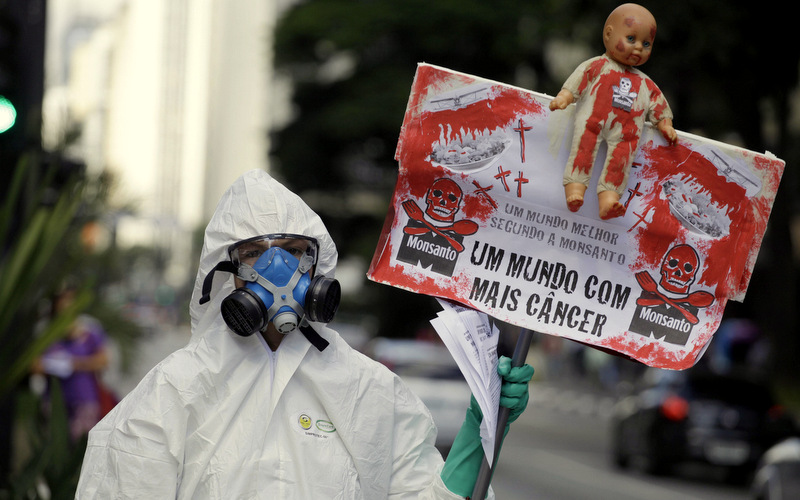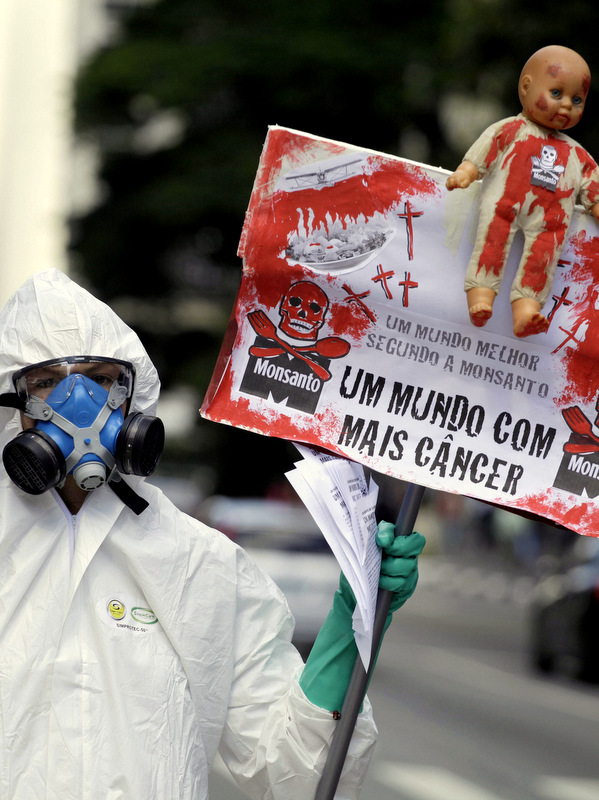
Millions of people around the globe will participate in local demonstrations on May 24, 2014, to call for a permanent end to the use of genetically modified organisms and other harmful agrochemicals used by “Big Agriculture” companies such as Monsanto.
Dubbed the March Against Monsanto, the protests will be held in more than 400 cities in more than 52 countries on six different continents this year. The substances to be protested carry known health risks such as organ damage, sterility, infant mortality, birth defects, autoimmune conditions, allergies and increased risk of cancer.
Tami Monroe Canal founded the March Against Monsanto, inspired by a desire to protect her two daughters.
“Monsanto’s predatory business and corporate agricultural practices threatens their generation’s health, fertility and longevity,” Canal said.
The 400 events that took place in the United States last year drew 2 million participants, but the event was largely ignored by national media. Still, the conversation about genetically modified crops grown in the U.S. such as soybeans, cotton and corn has continued, with some expanding the conversation to discuss not only the serious health risks associated with consuming GMOs, but also the environmental damage caused by the cultivation of these pesticide-resistant crops.
“If we fail to realize that March Against Monsanto is not about GMOs alone, then we have already lost the battle,” said Kelly L. Derricks, founder of the movement’s Agent Orange Awareness program, which highlights how the company responsible for the creation of the deadly chemical weapon Agent Orange during the Vietnam War era is now in charge of the food supply.
Josh Castro, an organizer for the march in Quito, Ecuador, echoed Derricks, saying, “Monsanto’s harmful practices are causing soil infertility, mono-cropping, loss of biodiversity, habitat destruction, and contributing to beehive collapse.
“GMO crops cross-pollinate with traditional crops,” Castro said, “risking peasant farmers’ livelihood.”
While GMOs are partially banned in several countries — including Austria, Bulgaria, Germany, Greece, Hungary, Ireland, Japan, Luxembourg, Madeira, New Zealand, Peru, Russia, France, Switzerland and Costa Rica — and are required to be labeled in 62 countries, there is no ban in any shape or form on GMOs in the U.S., though some states are working to change that.
Even where GMOs are banned, the chemicals find their way into those countries’ food supplies because factory farm animals are often fed GMOs.
Part of the reason GMOs are not banned — or even labeled — in the U.S. is because organizations that benefit from the use of GMO crops like Monsanto spend millions and possibly billions of dollars lobbying lawmakers in Washington, D.C., to not regulate GMO seeds, and advertising the safety of GMO crops.
The Monsanto influence doesn’t stop there, though. Former attorneys for the organization have been appointed to key positions within federal agencies such as the Food and Drug Administration and the Environmental Protection Agency, which are tasked with regulating “Big Agriculture” businesses.
Possibly because of the former Monsanto officials within the federal government, there is no requirement to test the safety of these products that the company claims are the “solution to world hunger.” And every attempt to regulate Monsanto’s products seems to get blocked.
In 2000, a group of 828 scientists from 84 different countries signed an open letter to all world governments, in which they described the specific concerns they had with GMOs. They also asked for world leaders to call for and agree to an immediate five-year suspension of the use of GMO crops so that “a comprehensive public enquiry of agriculture” could be conducted to ensure “food security for all.”
The U.S. government has not yet agreed to the scientists’ request, but if the public overwhelmingly demands that a change be made, Congress may have no choice but to listen to them instead of a corporation.


